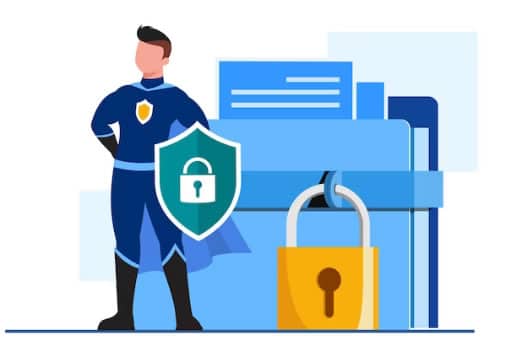Basic Steps On How to Protect Personal Data
Personal data has become an invaluable asset Today. However, this valuable asset is also a prime target for cybercriminals who seek to exploit it for financial gain or malicious purposes. Protecting personal data is therefore of paramount importance for individuals and organizations alike.
Contents
- 1 Understanding the Importance of Data Protection
- 2 Protecting Personal Data: Essential Steps
- 2.1 1. Create Strong and Unique Passwords:
- 2.2 2. Employ Two-Factor Authentication (2FA):
- 2.3 3. Be Cautious with Social Media Sharing:
- 2.4 4. Exercise Caution When Using Public Wi-Fi:
- 2.5 5. Be Wary of Phishing Attempts:
- 2.6 6. Install and Update Security Software:
- 2.7 7. Be Mindful of Data Collection Practices:
- 2.8 8. Regularly Review and Update Privacy Settings:
- 2.9 9. Report Suspicious Activity:
- 2.10 10. Stay Informed and Vigilant:
- 3 Conclusion
- 4 Here’s some more useful resources on How to Protect Personal Data
Understanding the Importance of Data Protection
Personal data encompasses a wide range of information that can be used to identify an individual, including their name, address, phone number, email address, social security number, financial information, and online browsing history. This data is collected by various entities, including government agencies, businesses, and social media platforms, often for legitimate purposes such as providing services, conducting transactions, or marketing products.
However, the collection and storage of personal data also create potential vulnerabilities. If this data falls into the wrong hands, it can be used for identity theft, fraud, blackmail, or other harmful purposes. Moreover, data breaches can erode public trust in organizations and damage their reputations.
Protecting Personal Data: Essential Steps
Fortunately, individuals can take proactive steps to safeguard their personal data and minimize the risk of data breaches. Here are some essential measures to consider:
1. Create Strong and Unique Passwords:
Passwords are the first line of defense against unauthorized access to personal data. Use strong passwords that are at least eight characters long and include a combination of uppercase and lowercase letters, numbers, and symbols. Avoid using easily guessable information such as birthdays or family names.
2. Employ Two-Factor Authentication (2FA):
2FA adds an extra layer of security to online accounts by requiring additional verification beyond just a password. This could involve entering a code sent to your phone or email address, or using a fingerprint or facial recognition scanner.
3. Be Cautious with Social Media Sharing:
Social media platforms collect a vast amount of personal data, including your interests, location, and social connections. Limit the information you share on social media and be mindful of the audience you are sharing it with. Adjust your privacy settings to control who can see your posts and information.
4. Exercise Caution When Using Public Wi-Fi:
Public Wi-Fi networks are often unsecured and vulnerable to cyberattacks. Avoid accessing sensitive personal information or conducting online transactions while using public Wi-Fi. If necessary, consider using a virtual private network (VPN) to encrypt your internet traffic.
5. Be Wary of Phishing Attempts:
Phishing emails and text messages are designed to trick you into revealing personal information or clicking on malicious links. Be cautious of unsolicited emails or messages that ask for personal information or direct you to unfamiliar websites.
6. Install and Update Security Software:
Regularly install and update antivirus, anti-malware, and firewall software to protect your devices from cyber threats. These tools can help detect and block malicious software that could steal personal data.
7. Be Mindful of Data Collection Practices:
Read the privacy policies of websites and applications before providing your personal information. Understand how your data will be collected, used, and shared. Only provide information that is necessary and be wary of sharing sensitive data.
8. Regularly Review and Update Privacy Settings:
Review and update your privacy settings on websites, social media platforms, and applications regularly. Ensure that your privacy settings align with your comfort level and limit the exposure of your personal information.
9. Report Suspicious Activity:
If you notice any suspicious activity on your online accounts, such as unauthorized login attempts or changes to your personal information, report it immediately to the relevant service provider.
10. Stay Informed and Vigilant:
Keep yourself updated on the latest cybersecurity threats and trends. Follow reputable sources for cybersecurity news and advisories. Be vigilant and exercise caution when interacting with online platforms and sharing personal data.
Conclusion
Protecting personal data is an ongoing process that requires vigilance and proactive measures. By following the steps outlined above, individuals can significantly reduce their risk of data breaches and safeguard their valuable personal information in the digital age. Incase of data loss or theft, consult professional cyber security experts to guide you on steps to take.

